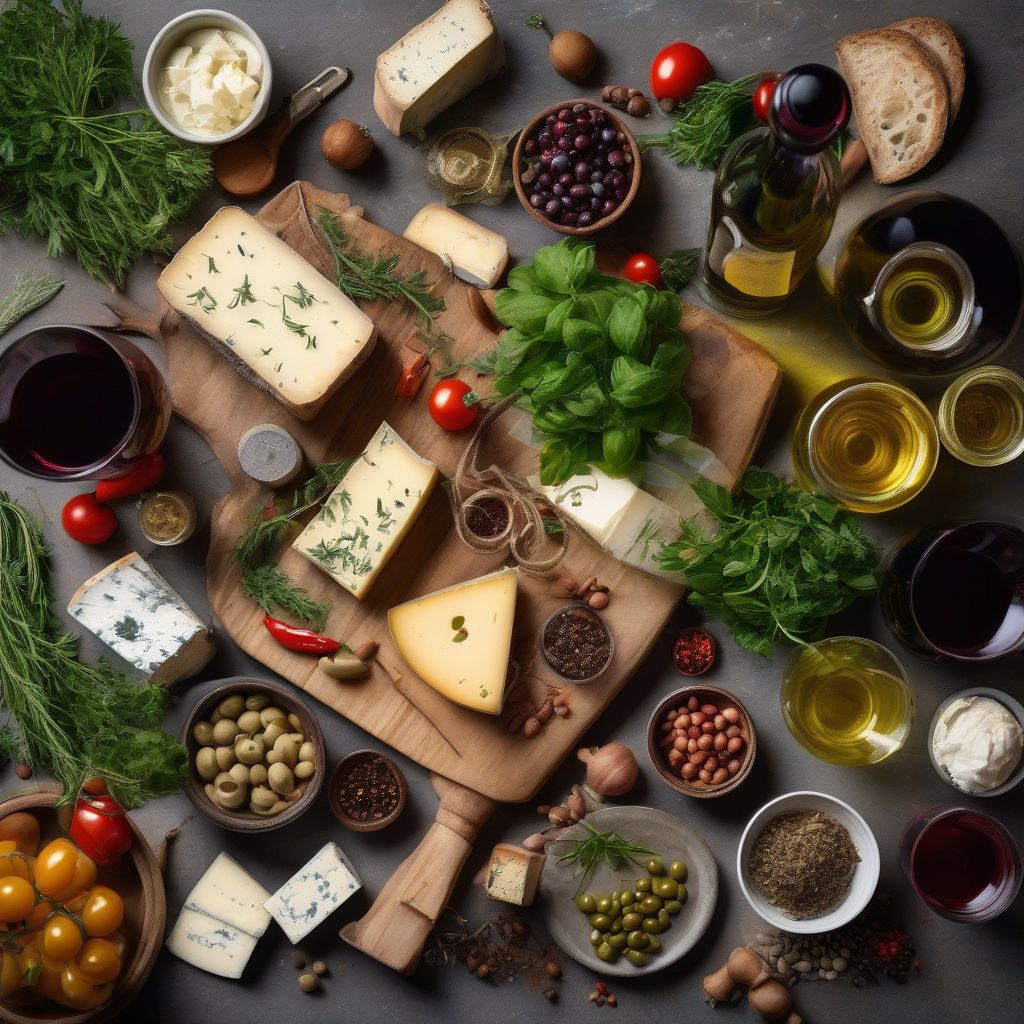Imagine biting into a flaky croissant, the aroma of butter filling your senses, transporting you straight to a Parisian café. Or perhaps, savoring a plate of perfectly al dente pasta, coated in a rich, aromatic sauce that speaks of Italian sunshine and generations of tradition. European gourmet food has a way of captivating us, drawing us in with its enticing flavors, elegant presentation, and the promise of an experience that goes beyond mere sustenance. But its influence extends far beyond charming cafes and Michelin-starred restaurants. It has subtly, yet undeniably, shaped the landscape of global dining in profound ways.
A Culinary Tapestry Woven Through Time
European cuisine, particularly the sophisticated culinary traditions associated with gourmet dining, boasts a rich and complex history. It’s a tapestry woven from centuries of cultural exchange, geographic diversity, and a relentless pursuit of culinary excellence.
The Foundations: Ancient Influences and Medieval Transformations
Ancient civilizations, like the Greeks and Romans, laid the groundwork with their sophisticated agricultural practices and culinary arts. They introduced ingredients and techniques that are still celebrated today, from olive oil and winemaking to the art of bread baking.
The Middle Ages saw the rise of elaborate feasts in aristocratic courts, where food was not just fuel but a symbol of wealth and power. This era also witnessed the emergence of cookbooks, documenting recipes and culinary practices that would influence generations to come.
Renaissance Rebirth and the Birth of Haute Cuisine
The Renaissance marked a turning point. As Europe emerged from the Middle Ages, there was a renewed interest in classical arts and culture, including gastronomy. This period saw a shift from heavy, spice-laden medieval dishes towards lighter, more refined preparations that emphasized the natural flavors of fresh ingredients.
The French, with their penchant for elegance and sophistication, played a pivotal role in shaping what we now recognize as gourmet dining. In the 17th century, chefs like La Varenne revolutionized French cooking, introducing the concept of “sauce,” elevating it to an art form. This era also witnessed the formalization of dining etiquette and the rise of professional chefs.
The Rise of Restaurants and the Democratization of Fine Dining
The 18th century brought about another significant shift with the emergence of restaurants. While initially catering to the elite, restaurants gradually became more accessible, allowing a wider segment of society to experience the pleasures of gourmet cuisine.
The 20th Century and Beyond: Innovation and Global Fusion
The 20th century ushered in an era of culinary innovation. Nouvelle Cuisine, pioneered by chefs like Paul Bocuse and Fernand Point, challenged traditional French cuisine, advocating for lighter, more delicate flavors and artistic presentations.
Today, European gourmet food continues to evolve, embracing global influences while staying true to its roots. It’s a vibrant tapestry that reflects both its storied past and its exciting future.
The Global Reach of European Gourmet Food
The influence of European gourmet food on global dining is undeniable. It’s not simply about replicating European dishes but rather about the far-reaching impact on culinary techniques, ingredient choices, and the overall dining experience.
Culinary Techniques: From French Sauces to Italian Pasta Making
European culinary schools have long been regarded as the gold standard, attracting aspiring chefs from around the globe. These institutions have played a crucial role in disseminating knowledge of classic European techniques. From the delicate art of French sauce-making to the precise skill of Italian pasta-making, these techniques have been adopted and adapted by chefs worldwide, influencing the way food is prepared and presented.
Ingredient Influence: A World of Flavor
European cuisine has introduced a wealth of ingredients to the global palate. Tomatoes, potatoes, chocolate, coffee – these are just a few examples of ingredients that originated elsewhere but became integral to European cooking and, subsequently, spread their influence across the globe.
 European Gourmet Ingredients
European Gourmet Ingredients
The emphasis on seasonality and sourcing the finest ingredients, a hallmark of European gourmet dining, has also had a ripple effect, inspiring a global movement towards farm-to-table dining and a greater appreciation for fresh, local produce.
The Art of Dining: Ambiance, Etiquette, and the Overall Experience
European gourmet dining is not merely about the food; it’s about crafting an experience. From the elegant ambiance of a Parisian bistro to the warm hospitality of a Tuscan trattoria, dining in Europe is often seen as an occasion. This emphasis on the overall dining experience, including attentive service, elegant table settings, and a focus on creating a welcoming atmosphere, has influenced restaurant culture globally.
A Culinary Legacy: Enduring Appeal and Future Innovations
The influence of European gourmet food continues to shape global dining trends. Here are a few key takeaways:
The Enduring Appeal of Tradition:
In a world obsessed with novelty, there’s a certain comfort and familiarity in tradition. European gourmet cuisine, with its time-honored techniques and classic dishes, offers a sense of continuity and history that resonates with diners worldwide.
Embracing Innovation While Honoring Tradition:
While deeply rooted in tradition, European gourmet food is not static. Chefs are constantly pushing boundaries, experimenting with new ingredients, and reinterpreting classic dishes with modern sensibilities. This fusion of tradition and innovation ensures that European cuisine remains relevant and exciting.
A Global Exchange of Culinary Ideas:
The future of food is global. European gourmet cuisine will continue to both influence and be influenced by culinary traditions from around the world. This cross-cultural exchange of ideas and techniques will undoubtedly lead to exciting new culinary creations.
[amazon bestseller=”European Cuisine”]
Conclusion: A Delicious Legacy
The influence of European gourmet food on global dining is undeniable. From the techniques we use to the ingredients we savor and the way we experience dining, its impact is evident in kitchens and restaurants around the world. As we move forward, this culinary legacy will continue to inspire, evolve, and tantalize palates for generations to come.
What are your favorite aspects of European gourmet food? Share your thoughts and culinary experiences in the comments below!
